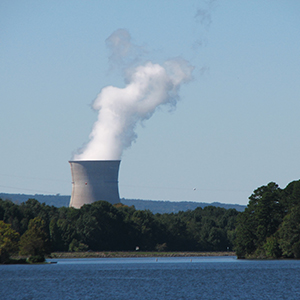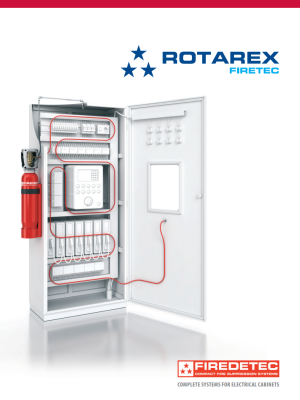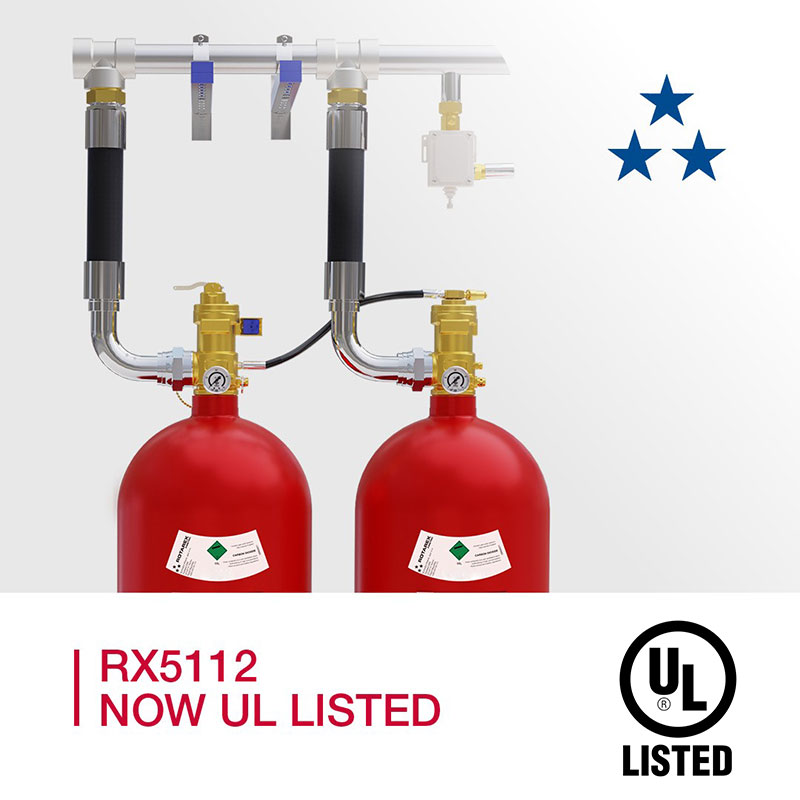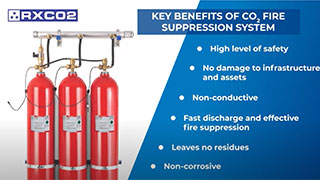Nuclear One: Could Electrical Cabinet-based Fire Suppression Have Reduced the Damage?

By Charles Strobel
The Union of Concerned Scientists is out with a new study on the 2013 disaster at Nuclear One near Russellville, Arkansas—and it has me wondering if electrical cabinet-based automatic fire suppression could have helped minimize the damage and reduce concerns over what might have been.
In vivid detail supported by video footage, the account captures a series of unbelievably catastrophic events that resulted in a flood that sparked an electrical cabinet fire that knocked out power and threatened efforts to cool down the reactor before it reached total meltdown.
Thankfully, backup diesel generators were functioning during the blackout and workers were able to use water pumps and feed water to cool down the reactor for the first time in its 30-year lifetime. But eight workers were injured during the event, four seriously—and one worker was killed.
Though it's impossible to confirm, there are elements to the account that seem to make an argument for augmenting fixed, building- and room-based fire suppression with electrical cabinet-based fire suppression in mission-critical environments.
But First: Fire Protection…Inside Electrical Cabinets?
Yes—and it's not as far-fetched as it may sound. The fact is, from 2010 through 2014, an estimated 32,960 non-home fires were attributed to electrical distribution and components, causing $1.2 billion in direct property damage, according to a March, 2017 study from NFPA.
With an estimated 13 percent of all non-home fires starting this way, a growing number of businesses and government agencies are looking at adding electrical cabinet-based automated fire suppression systems to their defenses.
Fixed installation systems for building and room fire protection play a critically important role in protecting facilities of all kinds, from data centers to factory floors to yes, nuclear reactors and beyond. But when a fire breaks out in a single electrical cabinet, why not stop it at the source—before the fire can damage surrounding equipment, and before the situation escalates enough to require your total flooding systems to also be actuated?
That's the idea behind a new generation of automatic fire suppression systems that fit directly into electrical cabinets, directly above wires and circuitry where a fire is likely to start.
As it happens, the Nuclear One storyline included a head-spinning plot twist that may have made a very different—yet no less compelling—case for electrical cabinet-based systems.
Related:
Which to Choose: Full Room or Electrical Cabinet Fire Protection?
Case Study: China Telecom Dials Up Electrical Cabinet Fire Protection
Murphy's Law in Action
According to the Concerned Scientists piece, an accident in the Unit 1 reactor at the site during refueling caused the electrical breaker for the power supply to a coolant pump at the site's Unit 2 reactor to open, forcing that coolant pump to cease operation.
This triggered an automatic shutdown of Unit 2 that ruptured an 8-inch diameter fixed fire suppression system header—flooding areas of the turbine building with tens of thousands of gallons of water.
In turn, the flooding caused a short circuit and explosion inside an electrical cabinet that disabled one of the two offsite power connections for Unit 2. This resulted in a water hammer in the units feedwater flow, forcing workers to use pumps and natural circulation to cool down the reactor.
Though only a distant possibility, had workers been unable to successfully cool down the reactor, there may have been a meltdown, propelled at least in part by a disabled fixed fire suppression system and a drop in offsite power supply caused an electrical cabinet fire.
Stopping Bad from Getting Worse
Clearly, the Nuclear One incident is in a realm all its own. But it does highlight risks associated with electrical cabinet fires that can be mitigated or even eliminated with automatic fire suppressions systems housed within them.
Some of the most advanced systems use pressurized, linear pneumatic tubing technology that bursts the moment it detects fires within an electrical cabinet. The sudden tube depressurization actuates the system and instantly floods the entire cabinet area with extinguishing agent, reaching where room protection systems cannot.
As a result, the fire is quickly snuffed out just moments after it begins, minimizing damage. And room-based systems don't have to be actuated more than is absolutely necessary, helping to accelerate incident recovery times and ensure business continuity.
Then again, Nuclear One should frame the question about what's right for your organization's critical systems: What happens if your room-based system is knocked out of commission? How might electrical cabinet-based automatic fire detection and suppression help stop a worse-case scenario from getting more disastrous than it needs to be?

To learn more, download a FREE overview brochure of the benefits and key applications of the FireDETEC electrical cabinet fire suppression system from Rotarex Firetec








